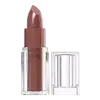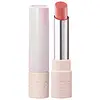What's inside
What's inside
 Key Ingredients
Key Ingredients

 Benefits
Benefits

 Concerns
Concerns

 Ingredients Side-by-side
Ingredients Side-by-side

Ricinus Communis Seed Oil
MaskingHelianthus Annuus Seed Oil
EmollientBis-Diglyceryl Polyacyladipate-2
EmollientIsopropyl Isostearate
EmollientOctyldodecanol
EmollientParaffin
PerfumingCastor Oil/Ipdi Copolymer
Copernicia Cerifera Cera
EmollientSqualane
EmollientCandelilla Cera
EmollientEthylhexyl Hydroxystearate
EmollientSaccharomyces Ferment
Skin ConditioningCera Microcristallina
Emulsion StabilisingSynthetic Wax
AbrasiveStearalkonium Hectorite
Gel FormingTocopheryl Acetate
AntioxidantLauroyl Lysine
Skin ConditioningPropylene Carbonate
SolventCocos Nucifera Oil
MaskingPersea Gratissima Oil
Skin ConditioningTocopherol
AntioxidantHydrogenated Vegetable Oil
EmollientVegetable Oil
Skin ConditioningAloe Barbadensis Leaf Extract
EmollientIron Oxides
CI 15850
Cosmetic ColorantCI 77891
Cosmetic ColorantCI 45410
Cosmetic ColorantMica
Cosmetic ColorantCI 19140
Cosmetic ColorantCI 15985
Cosmetic ColorantCI 42090
Cosmetic ColorantRicinus Communis Seed Oil, Helianthus Annuus Seed Oil, Bis-Diglyceryl Polyacyladipate-2, Isopropyl Isostearate, Octyldodecanol, Paraffin, Castor Oil/Ipdi Copolymer, Copernicia Cerifera Cera, Squalane, Candelilla Cera, Ethylhexyl Hydroxystearate, Saccharomyces Ferment, Cera Microcristallina, Synthetic Wax, Stearalkonium Hectorite, Tocopheryl Acetate, Lauroyl Lysine, Propylene Carbonate, Cocos Nucifera Oil, Persea Gratissima Oil, Tocopherol, Hydrogenated Vegetable Oil, Vegetable Oil, Aloe Barbadensis Leaf Extract, Iron Oxides, CI 15850, CI 77891, CI 45410, Mica, CI 19140, CI 15985, CI 42090
Bis-Diglyceryl Polyacyladipate-2
EmollientOctyldodecanol
EmollientMethyl Hydrogenated Rosinate
PerfumingHydrogenated Polydecene
EmollientHydrogenated Styrene/Methylstyrene/Indene Copolymer
Polybutene
Ricinus Communis Seed Oil
MaskingC12-15 Alkyl Benzoate
AntimicrobialCera Microcristallina
Emulsion StabilisingSynthetic Wax
AbrasiveZea Mays Starch
AbsorbentEthylene/Propylene Copolymer
AbrasiveCalcium Aluminum Borosilicate
CI 77891
Cosmetic ColorantSynthetic Fluorphlogopite
Butyrospermum Parkii Butter
Skin ConditioningLimnanthes Alba Seed Oil
Skin ConditioningStearalkonium Hectorite
Gel FormingAlumina
AbrasiveCI 77491
Cosmetic ColorantParfum
MaskingCI 77492
Cosmetic ColorantPropylene Carbonate
SolventMangifera Indica Seed Butter
Skin ConditioningHelianthus Annuus Seed Oil
EmollientAmmonium Glycyrrhizate
MaskingCI 15850
Cosmetic ColorantCI 77499
Cosmetic ColorantPentaerythrityl Tetra-Di-T-Butyl Hydroxyhydrocinnamate
AntioxidantGlyceryl Stearate Citrate
EmollientTocopherol
AntioxidantAscorbyl Tetraisopalmitate
AntioxidantSqualene
EmollientBeta-Sitosterol
Emulsion StabilisingTin Oxide
AbrasiveBis-Diglyceryl Polyacyladipate-2, Octyldodecanol, Methyl Hydrogenated Rosinate, Hydrogenated Polydecene, Hydrogenated Styrene/Methylstyrene/Indene Copolymer, Polybutene, Ricinus Communis Seed Oil, C12-15 Alkyl Benzoate, Cera Microcristallina, Synthetic Wax, Zea Mays Starch, Ethylene/Propylene Copolymer, Calcium Aluminum Borosilicate, CI 77891, Synthetic Fluorphlogopite, Butyrospermum Parkii Butter, Limnanthes Alba Seed Oil, Stearalkonium Hectorite, Alumina, CI 77491, Parfum, CI 77492, Propylene Carbonate, Mangifera Indica Seed Butter, Helianthus Annuus Seed Oil, Ammonium Glycyrrhizate, CI 15850, CI 77499, Pentaerythrityl Tetra-Di-T-Butyl Hydroxyhydrocinnamate, Glyceryl Stearate Citrate, Tocopherol, Ascorbyl Tetraisopalmitate, Squalene, Beta-Sitosterol, Tin Oxide
Ingredients Explained
These ingredients are found in both products.
Ingredients higher up in an ingredient list are typically present in a larger amount.
This ingredient is lipid-based synthetic skin-conditioning agent derived from adipic acid and a mixture of fatty acids. It is often called a lanolin substitute.
As an emollient, it helps soften and hydrate the skin. Emollients create a barrier on the skin to trap moisture in.
Due to its fatty acid base, it may not be Malassezia folliculitis safe.
Learn more about Bis-Diglyceryl Polyacyladipate-2Cera Microcristallina isn't fungal acne safe.
Ci 15850 is the pigment color red. It is an azo dye and created synthetically.
Azo dyes need to be thoroughly purified before use. This allows them to be more stable and longer-lasting.
This ingredient is common in foundations, lipsticks, and blushes. This color is described as brown/orangey red.
It has many secondary names such as Red 6 and Red 7. According to a manufacturer, Red 6 usually contains aluminum.
Learn more about CI 15850Ci 77891 is a white pigment from Titanium dioxide. It is naturally found in minerals such as rutile and ilmenite.
It's main function is to add a white color to cosmetics. It can also be mixed with other colors to create different shades.
Ci 77891 is commonly found in sunscreens due to its ability to block UV rays.
Learn more about CI 77891Helianthus Annuus Seed Oil is the oil derived from the seeds of a Sunflower. Sunflower seed oil is non-fragrant. It is an emollient, meaning it helps to soften the skin.
Sunflower seed oil contains many fatty acids. The fatty acids found in sunflower seeds include (from highest amount to least): linoleic acid, myristic acid, palmitic acid, stearic acid, arachidic acid, oleic acid, and linolenic acid.
These fatty acids help the skin create ceramides. Ceramides play a role in repairing the skin barrier.
Helianthus Annuus Seed Oil helps moisturize the skin. This in turn helps the skin look more rejuvenated and smoother.
Sunflowers are rich in vitamin E.
Historians believe Indigenous cultures of North America domesticated sunflowers before corn. Thus they relied on sunflower oil for a variety of uses. One such use is moisturizing skin and hair.
Sunflower seed oil may not be fungal acne safe. We recommend speaking with a professional if you have any concerns.
Learn more about Helianthus Annuus Seed OilOctyldodecanol is a fatty alcohol. It is primarily used to enhance the texture of products.
As an emulsifier, Octyldodecanol helps prevent the oils and waters from separating. It also prevents ingredients from creating foam when shaken.
Octyldodecanol is created by reducing fatty acid to an alcohol.
Due to its high molecular weight, it does not get absorbed into the skin.
Learn more about OctyldodecanolThis ingredient is a solvent. It helps dissolve active ingredients and alter the texture of products.
Propylene Carbonate is commonly used in makeup and with clay, such as montmorillonite or bentonite.
Studies show this ingredient to be safe for cosmetics. When it is undiluted, it can cause skin irritation. (It is always diluted in skincare and makeup). This ingredient is water-soluble.
Propylene Carbonate is created from propylene glycol and carbonic acid.
Learn more about Propylene CarbonateRicinus Communis Seed Oil is the INCI name for castor oil.
Castor Oil helps moisturize the skin. It is rich in a fatty acid called ricinoleic acid. This fatty acid helps prevent moisture loss on the skin. This helps keep your skin soft and hydrated. Ricinoleic acid also has anti-inflammatory and pain reducing properties.
Besides hydrating the skin, castor oil is also used to hydrate hair. By keeping the hair shaft moisturized, breakage is decreased. More studies are needed to show castor oil's effective on stimulating hair growth.
Castor oil is created by cold-pressing castor seeds and then purifying the oil with heat. It was used in Ancient Egypt as fuel in lamps and to help treat eye irritation.
The term 'fragrance' is not regulated in many countries. In many cases, it is up to the brand to define this term. For instance, many brands choose to label themselves as "fragrance-free" because they are not using synthetic fragrances. However, their products may still contain ingredients such as essential oils that are considered a fragrance.
Learn more about Ricinus Communis Seed OilStearalkonium Hectorite is a clay-derived ingredient used to thicken a product and help create a gel-like texture.
Synthetic Wax is created from fossil fuels such as natural gas. It is used to enhance texture, adjust pH, and as an occlusive.
It may also be used as an abrasive ingredient to exfoliate the skin.
Synthetic Wax may not be fungal acne safe.
Learn more about Synthetic WaxTocopherol (also known as Vitamin E) is a common antioxidant used to help protect the skin from free-radicals and strengthen the skin barrier. It's also fat soluble - this means our skin is great at absorbing it.
Vitamin E also helps keep your natural skin lipids healthy. Your lipid skin barrier naturally consists of lipids, ceramides, and fatty acids. Vitamin E offers extra protection for your skin’s lipid barrier, keeping your skin healthy and nourished.
Another benefit is a bit of UV protection. Vitamin E helps reduce the damage caused by UVB rays. (It should not replace your sunscreen). Combining it with Vitamin C can decrease sunburned cells and hyperpigmentation after UV exposure.
You might have noticed Vitamin E + C often paired together. This is because it is great at stabilizing Vitamin C. Using the two together helps increase the effectiveness of both ingredients.
There are often claims that Vitamin E can reduce/prevent scarring, but these claims haven't been confirmed by scientific research.
Learn more about Tocopherol